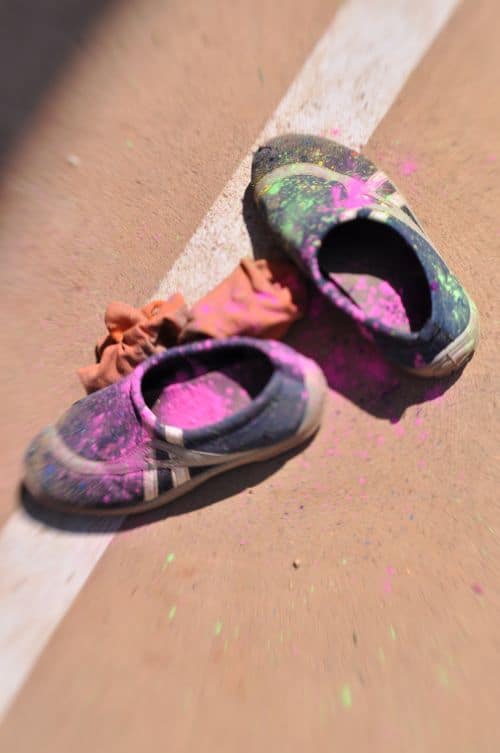Last year, my son played Holi and his skin was tinted green and pink for days. Some of his friends broke out in rashes or got wheezing. So this time, my neighbours and I are quite keen on making Holi safer.

Holi colours. File pic: Rajeev R.
Quoting Krish Ashok, a blogger, Holi is a “spring festival where people throw coloured powders that symbolically contain Neem, Kumkum and Turmeric but really contain Lead Oxide, Copper Sulphate and Aluminium Bromide. Yet another fine example of the great Indian tradition of carrying forward the ritual meaning while leaving behind the rational significance of using real herbs to immunise people against the coming diseases of summer.”
A Toxic Link study, found the presence of cheap materials like mica, acids, alkalis, pieces of glass, which not only induce skin disorders like abrasion, irritation, itching but can impair vision, cause respiratory problems and even cancer. See the full report “Holi: The ugly truth behind the colourful world”
There are few stories about the origin and significance of Holi, and most people feel the original purpose is lost. Whatever it was, it can still be a fun time for kids. So how do we ensure it is fun and safe?
Safety tips for Holi
Be careful if you or your children handle chemical based colours.
- Apply a layer of oil to your hair before playing Holi so that residue from the dyes does not get stuck to your hair and scalp.
- Ensure that your eyes remain protected at all times. Wash with plenty of clean water should any colour get into eyes accidentally. See a doctor if the irritation still persists.
- Make sure children do not smear the colours in the eyes or ingest the same.
- Prevent children from running or jumping on wet floors, so that they don’t slip and injure.
A few weeks ago, our residents Federation (Forward150) procured Rs 5000 worth of natural holi colours from the NGO Hundred Hands, which distributes Eco-exist’s Rang Dulaar Colours. The colours are made with natural food ingredients like turmeric and flowers, by women farmers of Malnad and packed by women prisoners at Pune. Since it takes months to prepare this – the flowers need to be dried before monsoon, they had made certain quantity based on expected demand.
Mala Dhawan of Hundred Hands, says they have distributed almost 500 packets of 250g each, “We have had to say no to lots of people”. She finds a change in attitude; it has gone beyond a niche fashion statement. People are more worried about impact on the children’s health as well as the environment. She says, “People are now asking how it’s made”.
More than twenty RWAs in our area, bought these and distributed to their residents. Obviously this is not enough for the needs of thousands of residents.
The interesting thing this time is that lots of apartment buildings have come together to celebrate Holi as a community.
Namdhari Fresh, the grocery retailer is also stocking Eco-exist colours. Peter Jose, Category Manager at Namdhari says they procured 1000 packets of assorted sizes. They have already sold around 400 odd packets. So hurry if you want to pick up your packet.
In our apartment too, given that there is not enough natural colours to go around, we are going to make some of the colours ourselves.
Here is an easy way to make natural colours (source: Clean India):
- Mix turmeric and rice powder to get yellow (can be used as a dry powder or mixed with water for colour liquid)
- Grind beetroot to make juice to get a pink liquid
- Mix turmeric and a pinch of Lime or Chunaa (sunna) to get orange liquid. Be careful – large amounts of Chunaa can be abrasive (very easy – tried it last weekend, can make bucket fulls with small amounts!)
- Most leaves can be ground for a wet paste, or mixed with water for green liquid
More colours are possible, but these seem the easiest. To make your own Pichkari bottle, see this.
⊕
Very informative. Our building,alas, is still looking pink-in-patches. One of the ladies shrugged, “The children go and get the gulal, why should I bother?”
Yes I totally agree to this post. While playing holi people must take needful precaution for skin and hair, I generally apply coconut oil on my skin and hair so that it don’t effect my skin and hair.
Hair Conditioner how to prevent hair fall